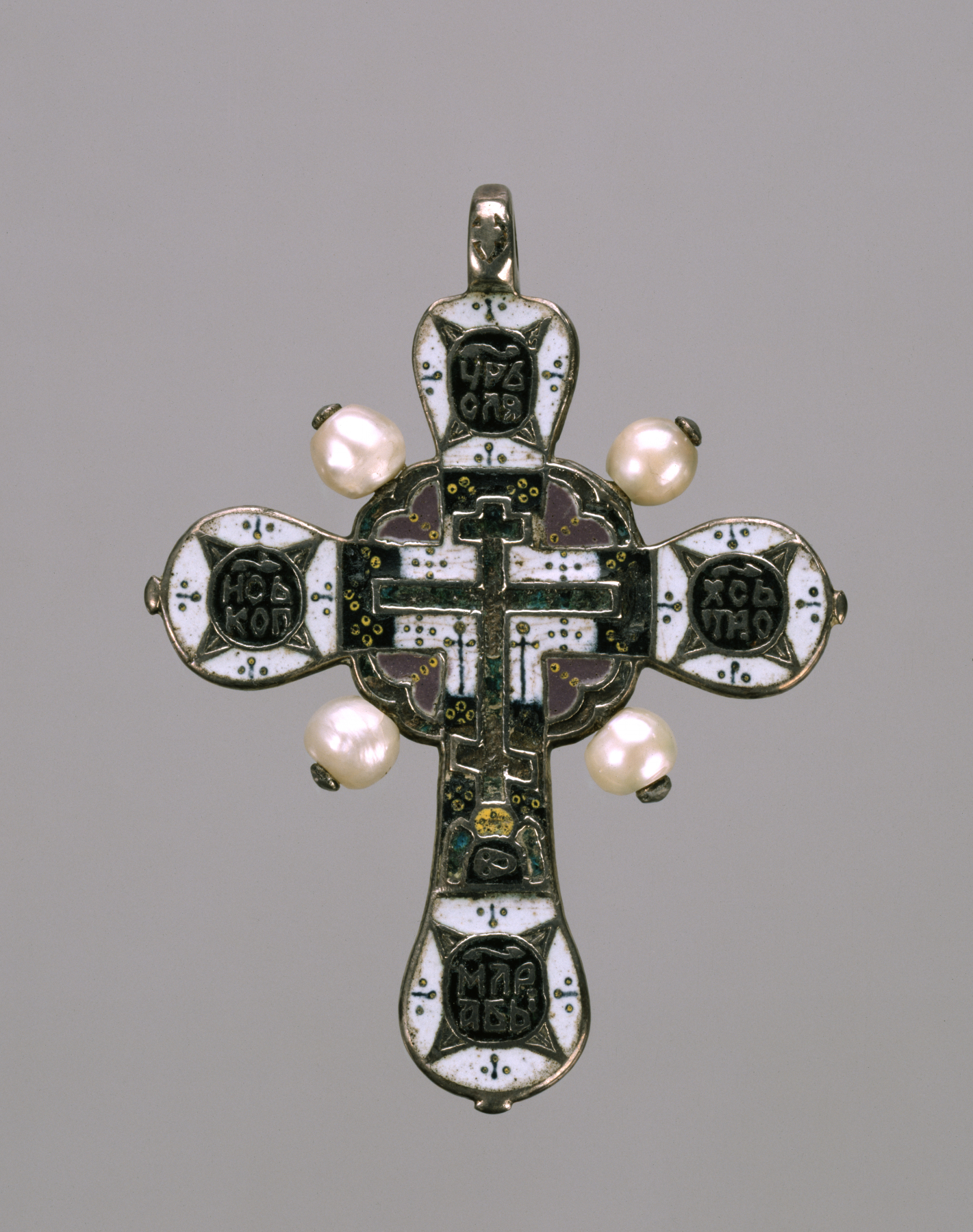Pendant Cross
(Byzantium and Early Russia)
This cross depicts at its center a second small cross of the Crucifixion, flanked by miniature representations of the lance and sponge, instruments of Christ's Passion. The skull below suggests the name of the hill - Golgotha (place of skulls) - and also refers to the legend that Christ was crucified on the site of Adam's tomb. The Church Slavonic abbreviations on the cross arms stand for "King of Glory" (top), "The Place of the Skull Became Paradise" (bottom), "Jesus Christ" (left and right), "Lance" (left), and "Sponge" (right).
Provenance
Provenance (from the French provenir, 'to come from/forth') is the chronology of the ownership, custody, or location of a historical object. Learn more about provenance at the Walters.
Henry Walters, Baltimore, by purchase; Walters Art Museum, 1931, by bequest.
Exhibitions
| 1996-1997 | Russian Enamels. The Walters Art Gallery, Baltimore. |
| 1988-1989 | A Millennium of Christianity: Russian Art from The Walters Art Gallery. The Walters Art Gallery, Baltimore. |
Geographies
Russia, Velikii Ustiug (Place of Origin)
Measurements
H: 2 1/2 x W: 1 13/16 x 1/4 in. (6.3 x 4.6 x 0.68 cm)
Credit Line
Acquired by Henry Walters
Location in Museum
Centre Street: Third Floor: Byzantine, Russian, and Ethiopian Icons
Accession Number
In libraries, galleries, museums, and archives, an accession number is a unique identifier assigned to each object in the collection.
In libraries, galleries, museums, and archives, an accession number is a unique identifier assigned to each object in the collection.
44.503


